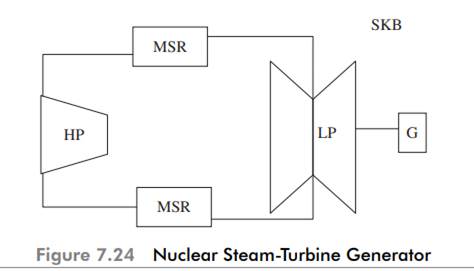In a large, 3000-rpm, sea shore-located power plant comprising of HP turbine and LP turbine, the sea water-cooled surface conducers is connected to the LP cylinder through a flexible joint (dog-bone joint) and the condenser is rigidly fixed to the foundation (Fig. 7.24).

In many of the designs of the steam-power plant, the joint between the LP casing and the condenser is solid and the condenser is spring mounted. However, in this case, the customer had preferred a flexible joint between the condenser and the LP turbine. In this case, any changes in the vacuum that is produced in the condenser, will cause the turbine casing to move up and down. Consequently, the bearings of the LP turbine, which are housed in the turbine casing, will also move up and down depending upon the changes in the vacuum. This movement causes change in the alignments of the HP / LP rotor and generator rotors and would cause an increase in the vibrations, especially that of LP-rear and generator-front bearing. As long as the vacuum in the condenser does not change significantly, the vibration behaviour would be steady. In this particular case, during the high-tide days, the jellyfish would enter the seawater-intake pipe and ultimately get lodged in the water boxes of the condenser causing obstruction to the flow of water in the condenser tubes. This results in the loss of vacuum in the condenser. The condenser develops the rated vacuum once these jellyfish are dislodged and drained out. This phenomenon occurred periodically causing periodic excursions in the vibration levels. The corrective action of preventing the jellyfish from entering the condenser water boxes proved to be the solution for the problem. The case study shows that the vibration engineer, in addition to vibration analysis, must carry out a systematic study of operating parameters to pinpoint the cause of the vibration problem.

